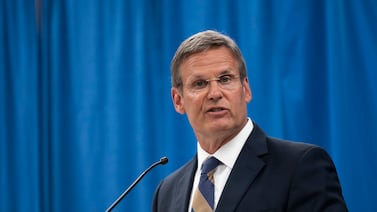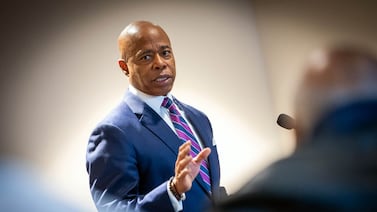The Denver school district and teachers union are renegotiating the teacher contract for the first time since the union went on strike in 2019 for higher wages.
The deal that ended the strike resulted in big pay boosts. Over the past three years, the median union member has seen their pay grow 31%, according to district calculations. But the three-year, post-strike deal expires Wednesday, and with the cost of living soaring in Denver, the two sides have yet to reach a new agreement.
As usual, salary and benefits are the biggest sticking points. The Denver Classroom Teachers Association has proposed a three-year contract with a 12% cost-of-living raise for 2022-23, on top of educators’ “step and lane” increases, which are the raises they get based on experience and education.
Union President Rob Gould said teachers “want to have a significant cost-of-living increase so we can continue to attract and retain the best educators for our students.”
The district has countered with a 3.5% cost-of-living raise for this school year. When added to step and lane increases, the district calculates that would result in a 6.2% raise.
Teachers in other metro-area districts have gotten sizable raises this year. Aurora Public Schools teachers got an average 8.5% raise, and teachers in Jeffco Public Schools got an average 9% raise. The starting salary for a teacher in Jeffco is now $50,000, which was higher than Denver’s starting salary of $47,291 last year.
Superintendent Alex Marrero said he wants Denver Public Schools to offer the highest teacher pay in the area but the district doesn’t have enough state funding this year. He said recent agreements with other employee unions, including one that raises the pay for paraprofessionals to $20 an hour this year, show his commitment to providing competitive wages.
He also cut employees from what he has called a “bloated” central office and used some of the $9 million in savings to offset rising health care costs for employees.
“I’ve been dealt an unfair hand with me wanting to do what’s right and not having the resources to do it,” said Marrero, who has been superintendent for a little more than a year.
Pay isn’t the only issue on the table. The union is also advocating for lower class sizes for teachers and caseload caps for specialized service providers, such as occupational therapists and speech language pathologists. Many providers say their caseloads are unsustainable.
“We don’t feel heard,” speech therapist Shana Cook told the school board during public comment this week. “I do think there’s a money-first mentality in DPS.”
The union wants class size caps of 24 students for kindergarten through third grade and 25 students for fourth through 12th grade. The current class size cap is 35 students. The contract requires paraprofessionals to help in kindergarten through third-grade classrooms with more than 25 students, and in fourth- and fifth-grade classrooms with more than 27 students.
The district doesn’t currently have a caseload cap for specialized service providers or special education teachers, which educators say leads to burnout and high turnover.
“One of the few new employees who chose to join our team shared that colleagues in our field that previously worked in DPS have warned them not to work in the district, stating that they were underpaid, undervalued, and overworked,” speech therapist Jenni Scobey said.
But Marrero disagrees that caseload or class size caps are the solution. Instead, he said the union and district should form a committee to review class size data and figure out how to respond. He pointed to statistics from the Colorado Department of Education that show Denver has a student-to-teacher ratio of 14.5-to-1. Union leaders are skeptical.
To provide relief to overworked specialized service providers, Marrero would like to hire a central team of speech therapists and others to deploy to schools in need.
The district and the union met three times this week and have another bargaining session scheduled for Wednesday, the day the contract expires. In past years, the two sides have extended the expired contract so they can keep negotiating.
Marrero said he’s confident they can reach a deal by Wednesday.
“I am not only hopeful, I am committed to reaching an agreement by the 31st,” he said.
Melanie Asmar is a senior reporter for Chalkbeat Colorado, covering Denver Public Schools. Contact Melanie at masmar@chalkbeat.org.








